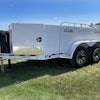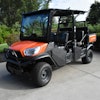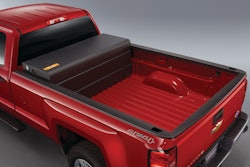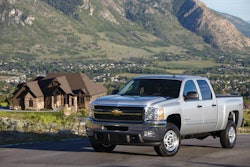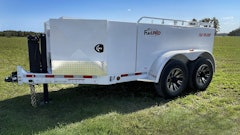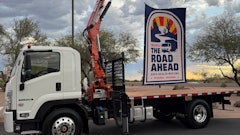
General Motors added a factory-installed option for natural-gas bi-fuel versions of the 2013 Chevrolet Silverado and GMC Sierra 2500 HD extended cab pickups. Buyers can order the trucks beginning in April. These vehicles will be powered by a Vortec 6.0-liter V8 engine that can run on compressed natural gas (CNG) and gasoline.
“Our customers are going to be able to get this truck in either a long bed or a short bed,” says Mike Jones, General Motors' CNG product manager. It will be available in either two-wheel or four-wheel drive. “So there are lots of ways to configure this vehicle for various customer needs.”
CNG can reduce your cost of ownership. “CNG is unique in that it is not attached to the price of oil,” says Joyce Mattman, director, GM commercial product and specialty vehicles. “Over time, it has maintained a lower retail price than both gasoline and diesel fuel.” The average price tends to range from $2.15 to $2.25. “Some states are under $2.00. It really differs widely by state. Savings can range anywhere from $6,000 to $10,500 over a three-year period.”
Availability of the fuel looks promising. “Right here in the U.S., we have about a 100-year supply,” says Mattman. And infrastructure continues to grow. “Since 2009, we have had a 26% increase in the number of CNG stations across the country. The most developed states are California, New York, Utah and Oklahoma.”
To address the issue of range and refueling, the bi-fuel pickups can work on gasoline or CNG. GM uses a lightweight Type 3 CNG tank that holds 17 gallons. It is made of composite material with an aluminum liner and a carbon fiber wrap.
“It is very light, but very durable,” says Jones. To further enhance safety, a collar was placed around the head of the tank where the valve is located. “The tank is not as large as some of the tanks used in the aftermarket. We did this because it provides the space we need with the bed of the vehicle to make sure there is enough clearance between the bed wall and the tank itself. Importantly, we mounted the tank to the frame of the truck. We put the fuel door up high to keep it out of impact areas – not only high but inside the frame rails.”
Gasoline is carried in a 36-gallon tank and all of the gasoline and high-pressure fuel lines are inside the frame rails. With the two fuel tanks combined, the pickups have a range of over 650 miles. “It allows the customer to get out of the range of a typical CNG station if required,” says Jones.
Cold start ability has been addressed. “The truck will always start on gasoline and then switches over automatically within a few minutes after the truck reaches the appropriate operating temperature,” explains Jones. “It will continue operating on CNG until the CNG tank is depleted, and then it will automatically transition over to gasoline. However, the driver can switch the vehicle from CNG to gasoline any time by using the switch on the dash.” An LED system on the switch indicates the fuel level in the CNG tank.
GM reports the customer feedback on performance during testing was positive, with many indicating performance seemed comparable with gasoline. “If you are driving on CNG, it will have a minimal loss of horsepower and torque,” says Jones. “The loss in horsepower and torque is typical with CNG and it is due to the lower energy density of the CNG itself." But the CNG system only adds 450 lbs. to the weight of the pickup, and the vehicle retains comparable towing capacity.
There are several considerations when designing a CNG vehicle. “Cold start validation is important with CNG,” says Jones. “We ensured the system is fully functional at less than -40° F. Hot start validation is also important. We make sure everything works well in temperatures as hot as 140°F. We make sure we have no performance degradation through 10,000 ft.”
The bi-fuel commercial trucks will be covered by a three-year, 36,000-mile new vehicle limited warranty and a five-year, 100,000-mile limited powertrain warranty.

